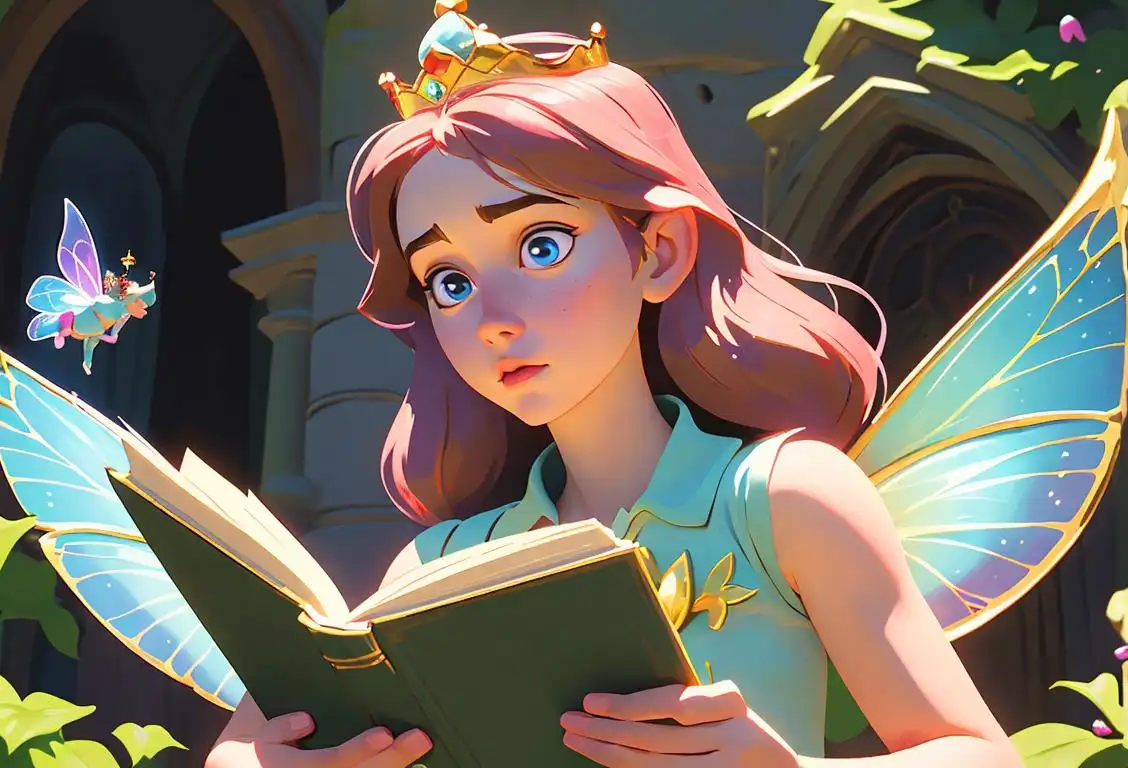National Fairy Tale Day

Once upon a time, in a land not so far away, there existed a magical day called National Fairy Tale Day. This enchanting celebration allows us to revisit the timeless stories that have captured our hearts and sparked our imaginations. So grab your favorite fairy tale book, sprinkle some fairy dust, and let's dive into the whimsical world of fairy tales!
When is Fairy Tale Day?
It's national fairy tale day on the 26th February.
The Origin Story:
While the exact origin of National Fairy Tale Day remains a mystery, it is believed to have sprung from the captivating tales passed down through generations. These imaginative stories have traveled through time, bringing joy, wisdom, and adventure to countless readers young and old.
A Digital Twist:
In the age of the internet, fairy tales have found a new home in cyberspace. Online platforms and e-books have made these classic stories more accessible than ever before. From Cinderella's glass slippers to Snow White's poisoned apple, the digital world allows us to immerse ourselves in the enchantment of fairy tales with just a few clicks.
Uncover the Magic:
On National Fairy Tale Day, take a journey into the realm of your favorite fairy tales. Rediscover the courage and resilience of characters like Belle, who sees beyond appearances, or Jack, who fearlessly climbs the beanstalk in pursuit of adventure. Engage in lively discussions about the lessons these tales teach us and the powerful messages they convey.
Fairy Tales Around the World:
Fairy tales exist in various cultures around the world, each with its unique flavor of magic and wonder. Explore the Arabian Nights and delve into the mystical stories of Scheherazade's intricate storytelling. Journey to the Far East and lose yourself in the ethereal tales of dragons, phoenixes, and ancient spirits. National Fairy Tale Day gives us a chance to celebrate the diversity of these captivating stories that have captivated audiences for centuries.
Bring Fairy Tales to Life:
Why stop at reading or listening to fairy tales? Embrace the spirit of this special day and bring the magic to life. Organize a fairy tale-themed party, complete with costumes and decorations straight out of the storybooks. If you're feeling particularly adventurous, put on a play or act out your favorite scenes with loved ones. Let the whimsy of fairy tales spark your creativity and imagination.
History behind the term 'Fairy Tale'
1697
Publication of Charles Perrault's 'Cinderella'
In 1697, French author Charles Perrault published his famous fairy tale collection 'Histoires ou contes du temps passé, avec des moralités' (Stories or Tales of Past Times, with Morals). This collection included the timeless story of 'Cinderella,' which played a significant role in popularizing the term 'fairy tale.' Perrault's tales were intended for adult readers and were highly influential in shaping the fairy tale genre.
1812
Brothers Grimm's 'Kinder- und Hausmärchen' published
In 1812, Jacob and Wilhelm Grimm released the first volume of their renowned collection titled 'Kinder- und Hausmärchen' (Children's and Household Tales). This collection, commonly known as Grimm's Fairy Tales, introduced a wide range of enchanting stories to the world. The Grimm brothers' works greatly contributed to the popularity and enduring appeal of fairy tales, solidifying the term 'fairy tale' in literary discourse.
1835
Introduction of the term 'fairy tale'
In 1835, the term 'fairy tale' was first used in English by British writer Thomas Crofton Croker. He translated and adapted several Irish fairy tales, publishing them under the title 'Fairy Legends and Traditions of the South of Ireland.' This marked the formal introduction of the term 'fairy tale' into the English language, signifying a distinct genre of storytelling portraying magical elements and often featuring mythical creatures or supernatural occurrences.
1845
Publication of Hans Christian Andersen's first fairy tales
Danish author Hans Christian Andersen published his first collection of fairy tales in 1845. Titled 'Fairy Tales Told for Children,' this book included beloved tales such as 'The Ugly Duckling,' 'The Princess and the Pea,' and 'The Little Mermaid.' Andersen's imaginative stories gained immense popularity and expanded the breadth of fairy tales, contributing to their global recognition.
20th Century
Disney's animated fairy tale films captivate audiences
Throughout the 20th century, Walt Disney Studios released numerous animated films based on fairy tales, captivating audiences worldwide. Classics such as 'Snow White and the Seven Dwarfs' (1937), 'Cinderella' (1950), 'Sleeping Beauty' (1959), and 'Beauty and the Beast' (1991) brought these enchanting tales to life in a visually stunning and magical way. Disney's adaptations further embedded fairy tales into popular culture, making them iconic and beloved by generations.
Did you know?
Did you know that the most popular fairy tales often have hidden symbolic meanings? Many of these tales originated as cautionary or instructional stories for children, using fantastical elements to convey important life lessons. So the next time you dive into a fairy tale, keep your eyes peeled for the deeper meanings hidden within!Tagged
awareness fun loved onesFirst identified
26th February 2016Most mentioned on
26th February 2018Total mentions
320Other days
Compliment Day
Cheese Pizza Day
Pumpkin Day
Medal Of Honor Day
Guac Day
Foundation Day
Suicide Prevention Day
Memorial Day
Cancer Survivors Day
Bacon Day









